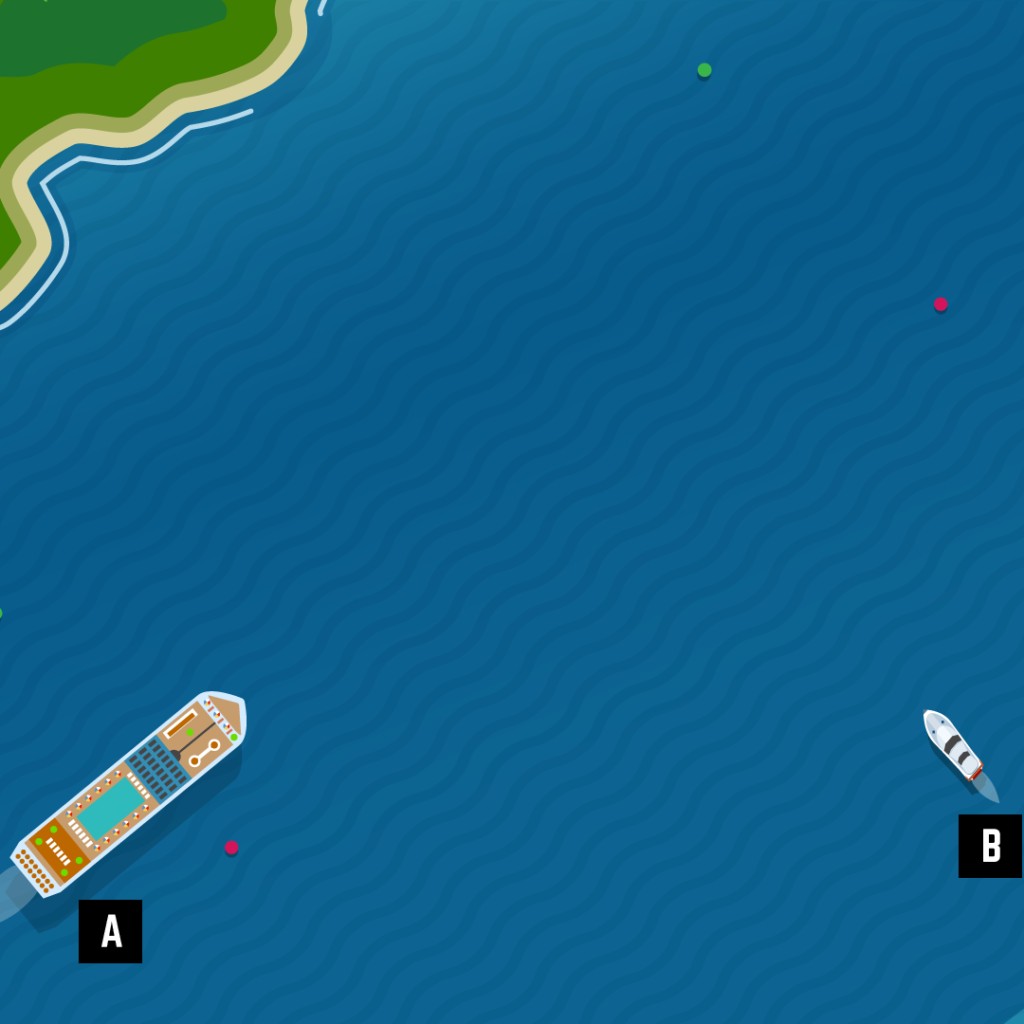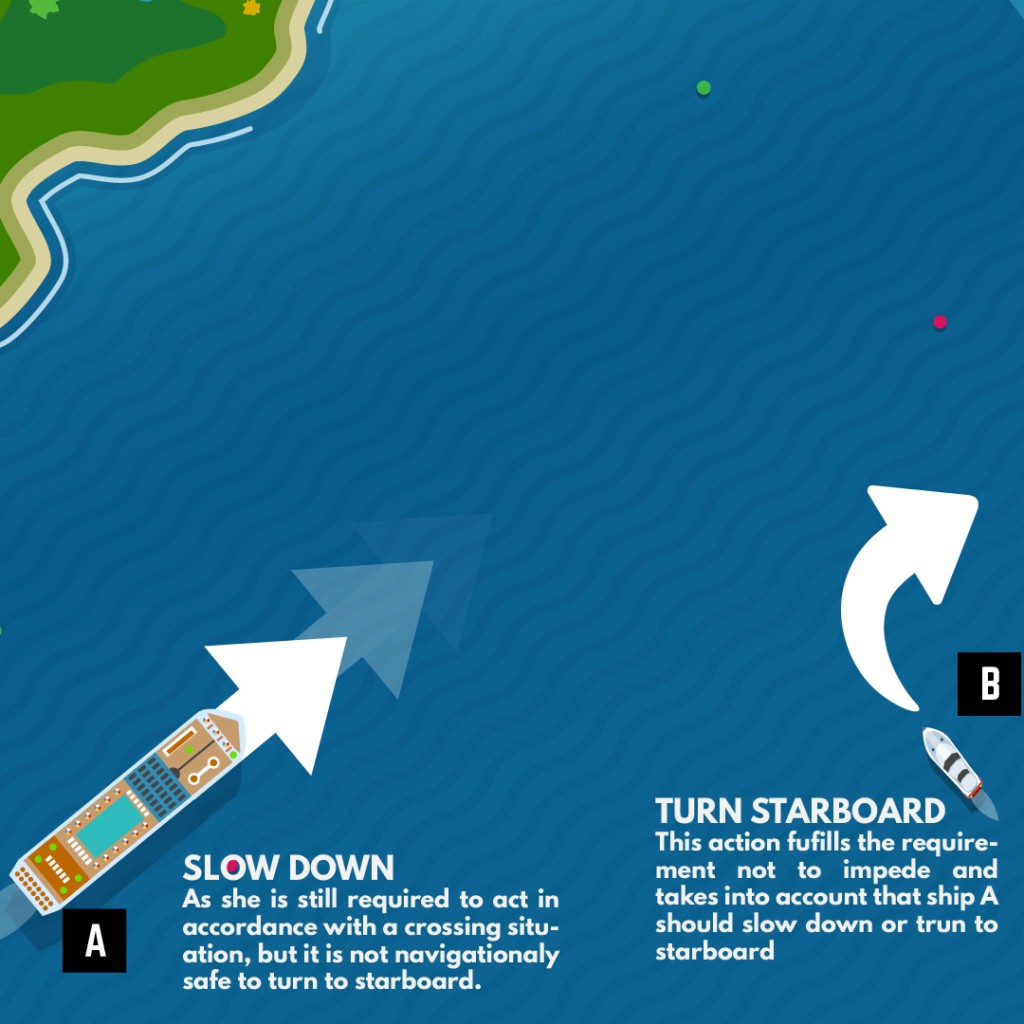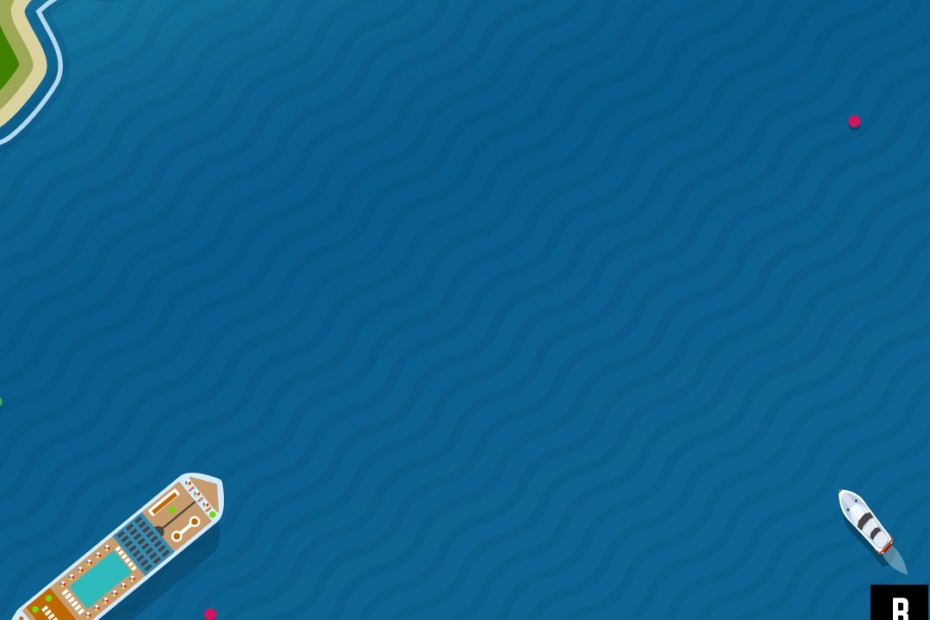Rule 8 (f) of the COLREGS is one of the most important and confusing rules! It helps us understand what should happen when more than one vesselThe word 'vessel includes every description of water craft, including non-displacement craft, WIG craft and seaplanes, used or capable of being used as a means of transportation on water'. is required to take action.
If you have been following our posts for a while you will know that we love explaining the rules using scenarios. For most people rule 8(F) only starts to make sense when they see how it is applied at sea. So let’s take a look out how it can be applied in real life.

When COLREGS rule 8(F) applies
8 (f) only applies when a vessel is required ‘not to impede the passage or safe passage’ of another vessel.
There are 3 possible scenarios
1. In or near a narrow channel
2. In or near a TSS
3. When a vessel is constrained by her draft.
Taking a narrow channel scenario we will use Rule 8 (F) to understand the actions a vessel can take to avoid collision.

We are on a PDV (ship A) that can safely navigate only within a narrow channel. On our starboard side we have a PDV (ship B) on a steady bearing. Rule 9 states that B should not cross the narrow channel if doing so would impede our passage. 8(F) (i) adds to this, B should take ‘early action to allow sufficient sea room’ for our safe passage.
You might be thinking ‘this is simple B should alter to port and pass astern’. Hold that thought.
On ship A, we decide that risk of collisionThe term risk of collision is described in Rule 7. 'Every vessel shall use all available means appropriate to the prevailing circumstances and conditions to determine if risk of collision exists. If there is any doubt such risk shall be deemed to exist.' More exists and we are in a crossing situation with B. We have to take action to keep out of the wayRule 16 Action by give way vessel - Every which is directed to keep out of the way of another vessel shall, so far as possible, take early and substantial action to keep well clear. More of B and simultaneously B has to take action to avoid impending us.
Rule 8 (F) (ii) talks about this situation from B’s perspective. Despite the fact that B is in a crossing situation she is still required to avoid impeding our passage. Additionally when B takes action she must take into account A’s possible actions.

Key points
- Rule 8(F) only applies in specifics scenarios when a vessel is required not to impede another
- The requirement to not impede can exists along with a risk of collision
- When a vessel takes action to avoid impeding another, they must consider any other actions that might be required in the current situation.
If you have found this article useful please share it with someone else. Find out how to understand and remember all of Rule 8 here.
